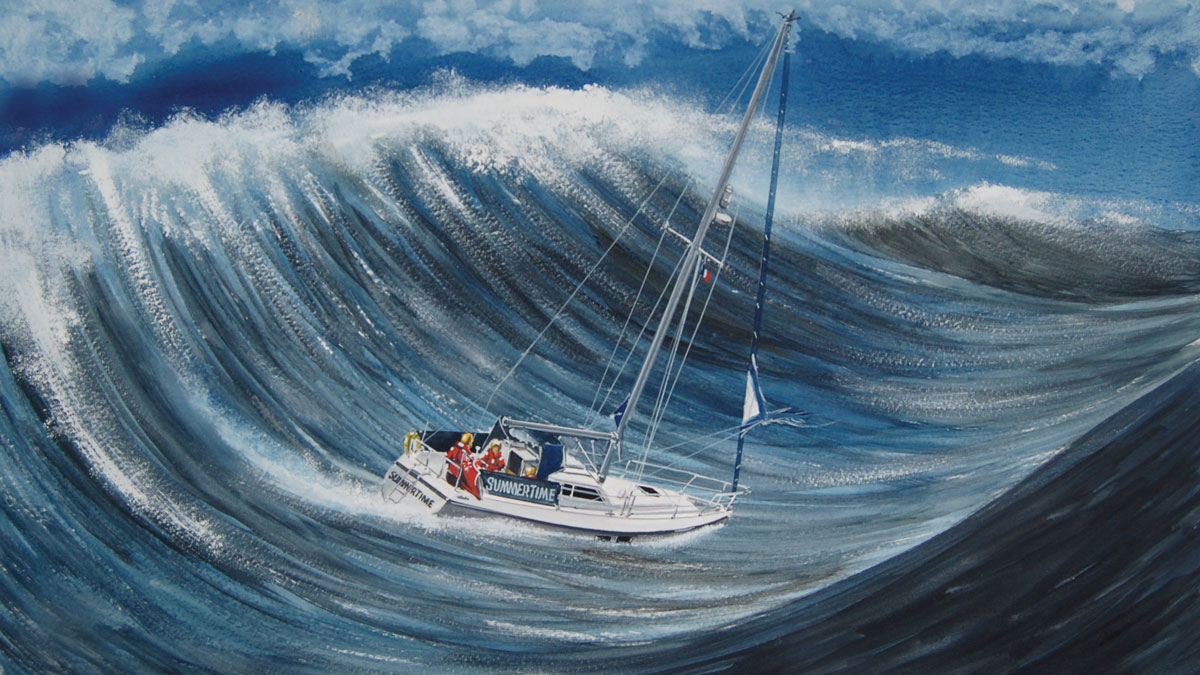A Channel Crossing Turns Treacherous
A routine crossing of the Channel transformed into a harrowing ordeal when a storm unexpectedly struck. The experience serves as a stark reminder of the unpredictable nature of sailing and the importance of preparedness on the open water.
This particular voyage began on an overcast June morning, aboard a reliable vessel, as a group set sail from a picturesque coastal town. The crew consisted of three seasoned sailors, who were well aware of the tides and conditions typically involved in such crossings. They decided to leave early, prioritizing their departure over waiting for ideal tidal conditions, somewhat assured by favorable weather forecasts.
Weather Conditions and Initial Sailing Experience
The initial sailing conditions seemed manageable, with a light breeze trailing from the southeast and calm waters. As the day progressed, however, wind and tide combined to create less than ideal conditions. Although the vessel was moving steadily, the crew found themselves relying on the motor to maintain a comfortable speed, inching toward the busy Traffic Separation Scheme (TSS).
With large commercial vessels in close proximity, vigilance was crucial. The radar system was activated to monitor incoming traffic, a standard safety measure for any sailor navigating crowded waters. Yet the crew couldn’t shake a sense of impending change looming over them.
Storm Predictions Become Reality
As they continued their journey, ominous clouds began to gather on the horizon. Just 45 miles from their port of call, a warning emerged from the Solent coastguard: a storm was brewing, and conditions would escalate to a storm force of around 9 to 10. This news sent an immediate wave of urgency through the crew.
Before they could fully react, a vicious gust of wind lashed at the sails, compelling the crew to furl them quickly. However, the task was complicated as the storm rapidly intensified. The vessel was hit broadside by enormous waves, resulting in panic and chaos as the cockpit began filling with water.
Handling the Storm
In the throes of the tempest, the crew was confronted with waves towering nearly 9 meters high. The violent nature of the conditions rendered many standard sailing practices ineffective. Steering became almost impossible as the rudder lost its grip on the turbulent waters.
Under immense pressure, the crew struggled to regain control of the craft. They shifted to activating the engine, hoping to ride the formidable waves rather than fall victim to them. Amidst these harrowing moments, the crew donned foul-weather gear and life jackets, a critical precaution in such an unpredictable environment.
The vessel, however, was built for challenging conditions. Its deep cockpit and high sides provided some degree of protection, allowing them to endure considerable water accumulation without compromising cabin integrity. Exhausted yet determined, the crew managed to secure themselves in place, relying on each member to fulfill specific roles in maintaining control and communication.
Out of the Storm and into Safe Harbor
The relentless storm finally began to subside after hours of battling nature’s fury. Visibility was poor, but as night fell, the familiar landmarks of the Isle of Wight became visible. Determined to reach the harbor safely, the crew navigated through busy shipping lanes infused with lights, reminiscent of a chaotic constellation.
Approaching the harbor was no easy feat, as they fought against wind and tide while ensuring the vessel’s integrity. Relief washed over them upon reaching the marina lock at 0300, where a friendly lockkeeper welcomed them into safety. What had begun as a simple crossing turned into an unforgettable, arduous journey.
Lessons Learned from the Experience
- Equipo de seguridad: Ensure crew members are familiar with safety protocols and equipment on board, including accessible flares and flashlights.
- Cockpit Management: Have multiple washboards ready to prevent flooding into the cabin during rough conditions.
- Furling Systems: Ensure ample lines are ready on the furling drum to aid in quick sail management.
- Wear Harnesses and Lifejackets: Even in calm conditions, maintaining safety gear is crucial.
- Tidal Awareness: Always prepare for tidal data based on actual arrival times rather than expected ETA.
- Onboard Snacks: Keep energy bars or chocolates handy for conditions when regular meals are impractical.
Summary and Conclusion
This experience stands as a testament to the unpredictable nature of sailing and the value of preparedness at sea. The lesson resonates with every sailor as they pursue their adventures, aligning perfectly with GetBoat’s values of freedom and choice on the open waters. The right vessel transforms leisure travel into memorable voyages, blending adventure with safety.
When planning your next seaside trip, consider the multifaceted experience awaiting you upon the waves. Each bay, inlet, and lagoon has stories to tell, much like local cultures and cuisines. Renting a boat can offer a deeper connection to your maritime adventure, inviting the sun, sea, and exploration into your journey. GetBoat.com offers a diverse range of options tailored to your preferences, so you can make your next boating experience unforgettable. Explore this wondrous opportunity to sail into the sunset and create precious memories.
With so much to learn and experience, every voyage is a chance to relish the beauty of nature and the thrill of adventure on the high seas. Join the community of ocean enthusiasts and embrace the allure of yachting, boating, and sailing with GetBoat.

 Navigating Stormy Waters: A Harrowing Channel Crossing">
Navigating Stormy Waters: A Harrowing Channel Crossing">
